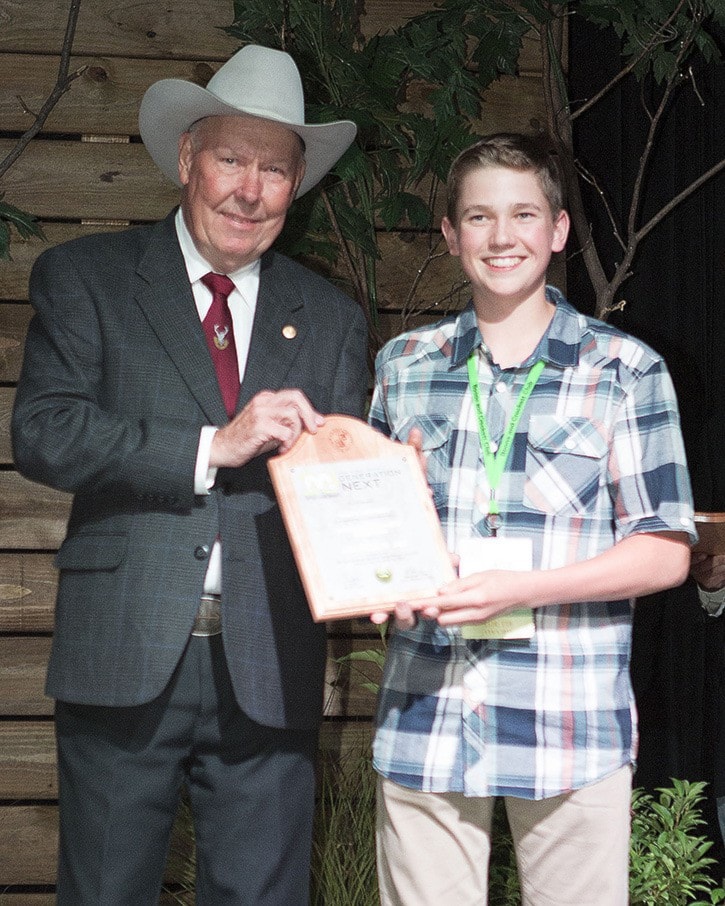A hunt of a lifetime earned a young Fruitvale hunter Boone and Crockett honours at the Club’s 29th Big Game Awards Banquet in Springfield, Missouri earlier this summer.
Kyle Bartsoff was recognized for his majestic Rocky Mountain goat that scored 53 Boone and Crockett points to put him among the top hunters in North America. Kyle shot the billy while hunting in southeastern BC in 2014 with his dad, Mike, and friend Marco Marello. As a young person under the age of 16, the Club gave special recognition to Bartsoff at a banquet sponsored by the Wild Sheep Foundation along with 41 other young sportsmen and sportswomen who harvested a Boone and Crockett qualifying trophy between the years 2013-15.
For the same billy, Bartsoff also had been awarded the Championship Cup for the largest Rocky Mountain goat ever entered at the West Kootenay Big Game Awards banquet in Trail in March of 2015. His goat is not far off the world record that was taken in 2012 in the Stikine River Valley of northern B.C., measuring in at 57 4/8 Boone and Crockett points.
Not for the timid, goat hunting often entails climbing into remote and precipitous areas to access prime mountain goat habitat, and this hunt was no different. Kyle recounted the details of the hunt in an article he penned for Eastmans’ Hunting Journal that vividly relates the difficulty, anticipation, and excitement of the hunt.
“After half an hour of watching the three goats and waiting out the fog, we decided to go after the billy,” wrote Bartsoff. “Marco, my Dad, and I threw on our backpacks, got our hiking poles out, and started walking. About 2 ½ hours of bush-whacking later, we started to climb at a very steep incline for another 1 ½ hours. We had to go down through a creek draw and back up the other side, placing us almost directly under the goats …”
Weeks of scouting and preparation led up to the hunt and once the stalk and harvest were complete, the trio had the unenviable task of searching for the goat that had fallen off the cliff and into the trees some 60 feet below.
“Almost 2 ½ hours after I pulled the trigger, my Dad stumbled upon some thick white hair in the alders, which led us directly to the goat. As I approached the billy … I could not believe how big it actually was. The first thing Marco said when he saw the huge billy was, ‘That thing’s Book!’ All three of us were completely surprised by the size of the goat. Rather than being smaller than we thought, which normally happens, the billy actually was bigger.”
The Boone and Crockett system of scoring big game trophies originated in 1906 as means of recording details on species thought to be disappearing because of rampant habitat loss, market hunting, and unregulated harvest. Science-based conservation efforts led and funded by license-buying hunters helped bring those species from vanishing to flourishing. The existence of mature, male specimens remains a classic gauge of sustainable hunting and successful habitat and wildlife management programs.
